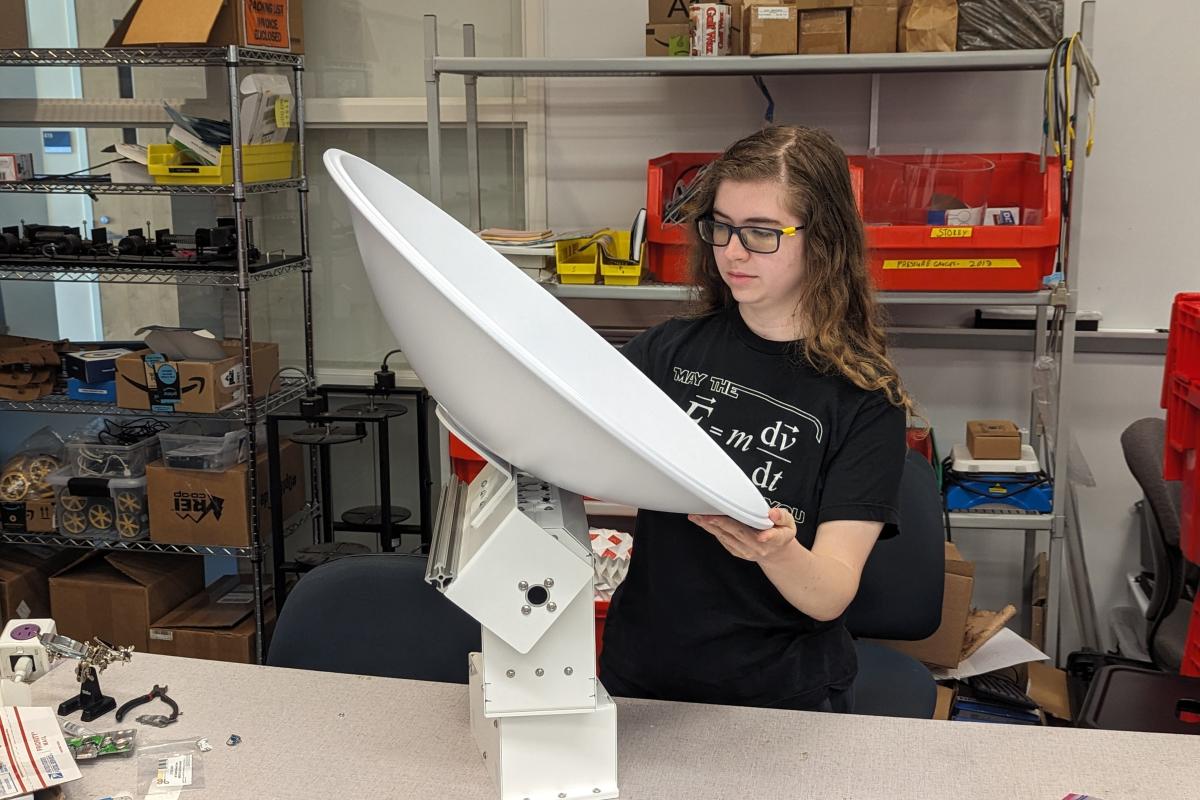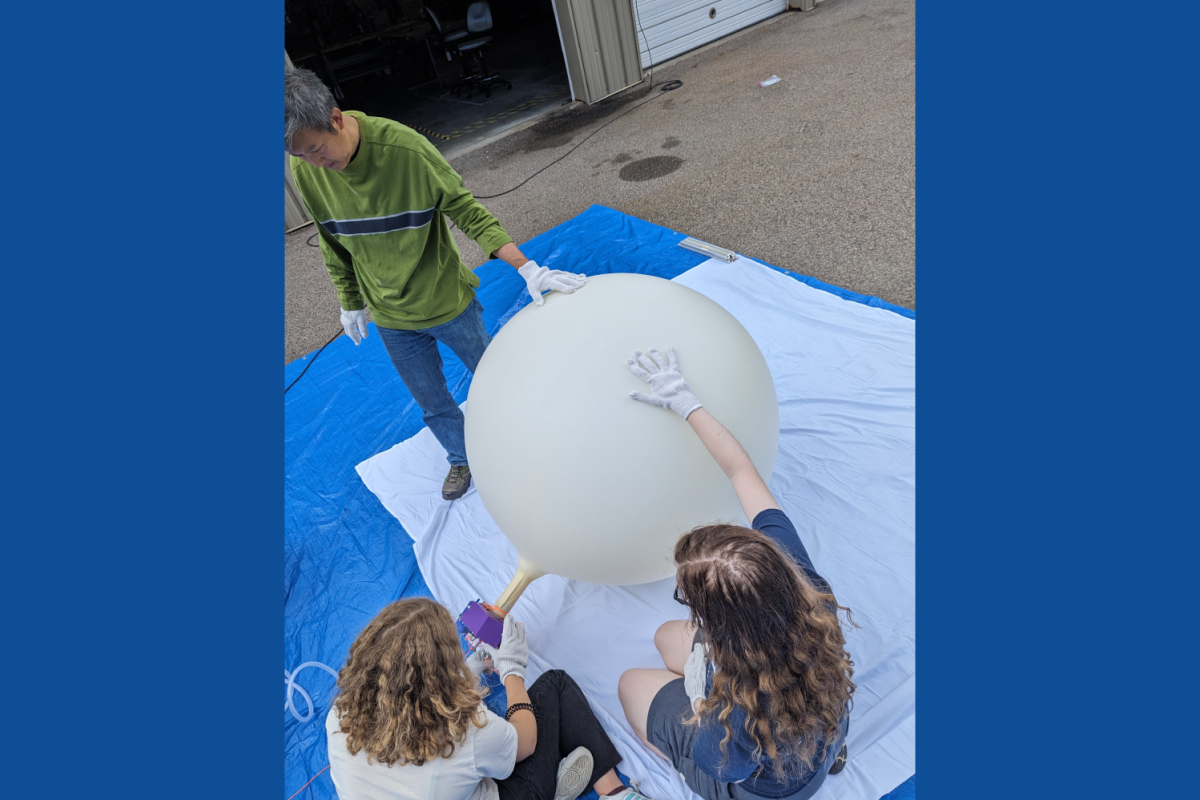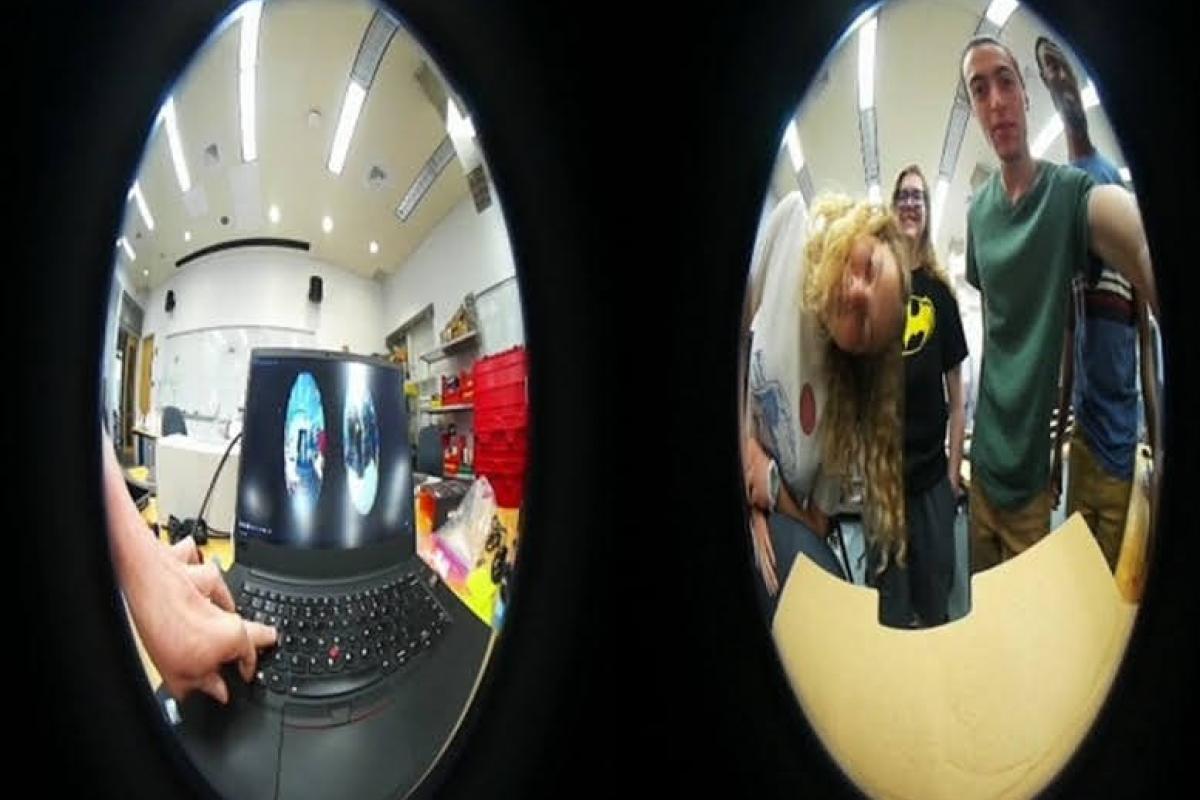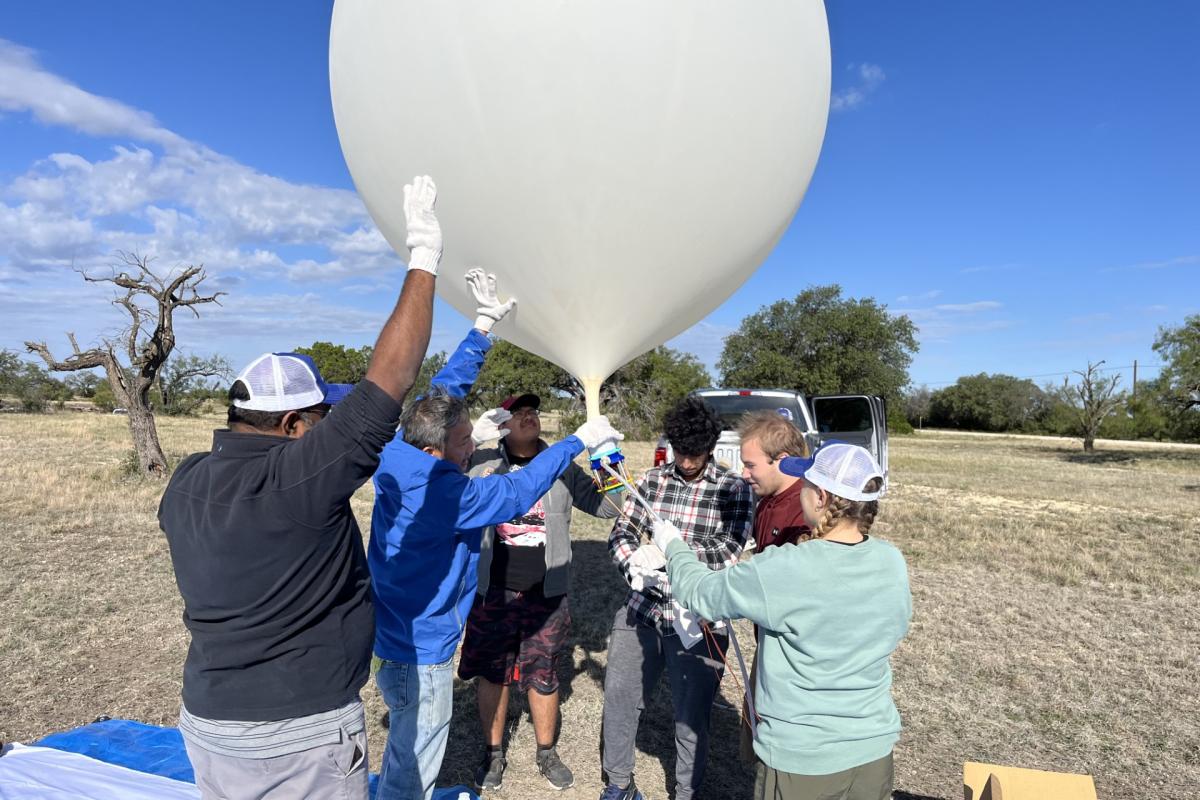Olin students tackle NASA-funded project to examine solar eclipses through high-altitude balloons.
Watch the live footage of the team's launch on October 14, 2023, at end of article.
This fall, a group of Olin students participating in the Nationwide Eclipse Ballooning Project (NEBP) will launch high-altitude balloons into the stratosphere during the first of two upcoming solar eclipses.
Funded by NASA, NEBP supports university teams from across the country to collect data for engineering and atmospheric science objectives. The project’s goal is to broaden participation of STEM learners by immersing teams in an innovative, NASA-mission-like adventure.
“When solar eclipses occur, often the shadow does not pass over easy-to-access areas in the continental U.S.,” says Christopher Lee, professor of mechanical engineering, and the Olin team’s faculty sponsor. “In order to take advantage of the optimal conditions coming this fall and next spring, NEBP is sponsoring teams to launch weather balloons inflated by helium to about 80,000–90,000 feet so they can video stream the eclipse and collect atmospheric data.”

Olin Student, Miranda Pietraski ’25, working with NEBP Hardware in the lab.
Olin students Karina Lamoreux ’25, Miranda Pietraski ’25, Omar Salih ’25, and Jacob Smilg ’24 began working on NEBP last winter and have spent the summer combining their expertise in everything from mechanical design to firmware programming.
NEBP supplied each team with about $10,000 worth of equipment, such as sensors to measure data like temperature and barometric pressure, as well as electronic hardware so students can track their balloons in flight in real time using GPS.
The balloons are approximately five feet in diameter when fully inflated and can carry a maximum of about 12 pounds. The necessary equipment comprises about nine pounds, leaving three pounds available for a custom payload designed by the students to achieve their own objectives.
“We had to narrow down a lot of ideas when it came to the custom payload, so we incorporated some Collaborative Design principles that we’ve learned in another Olin class,” says Jacob Smilg.
“We each had a stack of Post-it notes and set a timer and we wrote down ideas until we either ran out of ideas or time.”

Professor Chris Lee and summer team working with NEBP Balloon.
Students then stuck the notes on a whiteboard and, with help from Lee, discussed and voted on the ones they found the most interesting and feasible. The team decided on three separate elements of their custom payload:
- A pan-and-tilt camera that will track the moon’s shadow as it travels across the Earth;
- A Geiger counter to measure radiation levels; and
- Disposable film cameras that have been modified to automatically and remotely take photos of the eclipse from multiple angles.
Once the balloons are in flight, the students will be able to see their GPS location, some atmospheric data, and a video feed in real time. They will also be able to use the Iridium satellite constellation to control the balloons’ helium vents, as well as an emergency flight termination element.

Summer student researchers take a team picture with NEBP camera sensors.
The Olin team has been working full-time on their NEBP balloons over the summer in preparation for the culmination of the entire project. Lee and the students—along with other university teams—will travel to Junction, Texas, in October and again in April to launch their balloons during an annular and total solar eclipse, respectively.
“After we launch on October 14, the balloon will eventually burst due to atmospheric pressure,” says Pietraski. “We’ll use the Iridium system to trigger the payload to disconnect, and a parachute will allow everything to float back down to the ground. Using GPS, we’ll track the balloon’s location, go and retrieve it, and start examining and sharing the data with NEBP.”
The team is excited to share their experience with their fellow Olin students in any way they can; for starters, NASA sent 2,000 pairs of eclipse glasses so that the whole community can enjoy the solar events safely.
“I’ve done internships in the past, and I wanted to take on a research opportunity because they’re very different, yet they’re also two sides of the same coin,” says Salih.
“This is going to be very gratifying because we’ll be on board from design through launch—getting to see a project through from start to finish is very exciting, especially when we’re collecting real and useful data that can help answer researchers’ questions.”
Watch footage from the team's balloon launch on October 14, 2023, live below! (stream starts at: 26:04)

Olin NEBP Flight 10/14/2023 - Live Eclipse Weather Balloon Cam